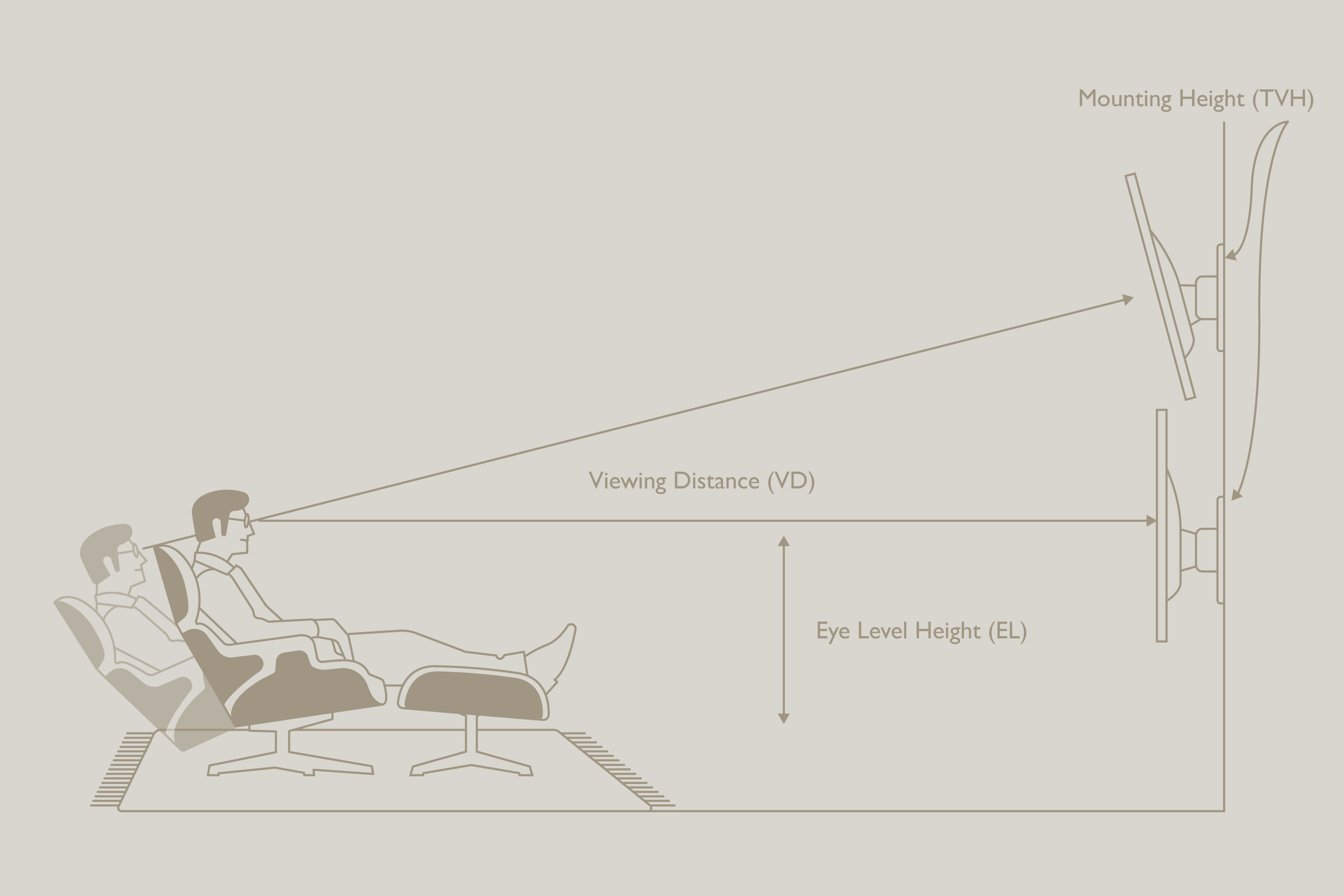Getting your screen set up for comfortable viewing can seem like a daunting task, but it’s actually fairly straightforward. You will need to know the size of your TV, how far away from it you will be sitting, and the viewing angle.
Horizontal Viewing Angle
The Society of Motion Picture and Television Engineers (SMPTE) sets that viewing angle at 30° based on an aspect ratio of 16:9, while the THX standard for the farthest seat in the centre of the theatre is a little wider at 36° (based on an aspect ratio of 2.39:1). The standard for home theatre is quickly becoming 2.39:1 so that’s the angle we should be concerned with.
If sitting too close to very large TVs, portions of the screen will fall outside of the 36° angle, forcing your eyes to move more than necessary and fatigue. But, on the flipside, as resolutions increase, the viewing angle increases proportionally. With a 4k display you may even be able to stretch that angle out to 50° or more. There really is no perfect answer to viewing angle for every situation, but if you try to stay close to 36°, everyone should have a great viewing experience.
Whilst that covers the horizontal placement of the screen, it is also crucial to consider the vertical placement.
Calculate Viewing Distance
Viewing Distance (VD) is the distance between where a viewer sits and the wall the screen is to mounted on.
VD = TV diameter x 1,67
Viewing Distance for 42” TV: 107cm x 1,67 = 1,7 m
Viewing Distance for 55” TV: 140 cm x 1,67 = 2,3 m
Viewing Distance for 65” TV: 165 cm x 1,67 = 2,7 m
Viewing Distance for 75” TV: 191 cm x 1,67 = 3,2 m
Calculate Eye Level Height
Measure the height from the floor to your eye level (EL) while sitting in your viewing seat. Note that if you will be reclining, the EL distance will be different than if you are sitting upright, so try to find your most comfortable viewing position for this measurement.
Calculate TV Mounting Height (TVH)
Next, calculate the mounting height to the television's centre point. Here a measured sitting height of 92 cm is used as an example.
EL+(VD x 0,22) = TVH
In our example for a 65” television: 92cm +(275cm x 0,22) = 153 cm
This sets the centre point mounting height of your 65” TV at 153 cm from the floor. If you have multiple rows with one or more rows set on a riser, take the average EL height and use that for your calculation.



Make sure you follow the manufacturer’s instructions exactly when installing your television mounting bracket, and then get yourself ready for a totally immersive theatre experience.




